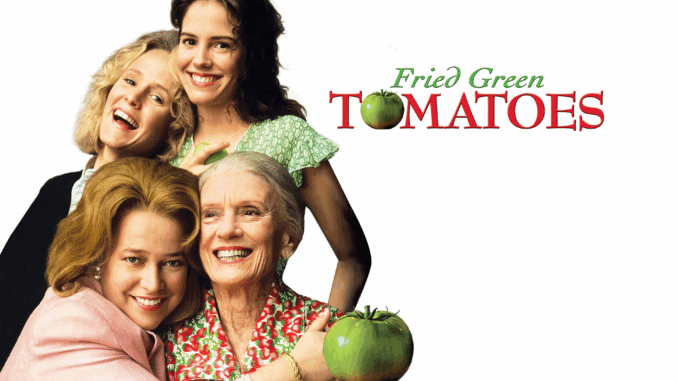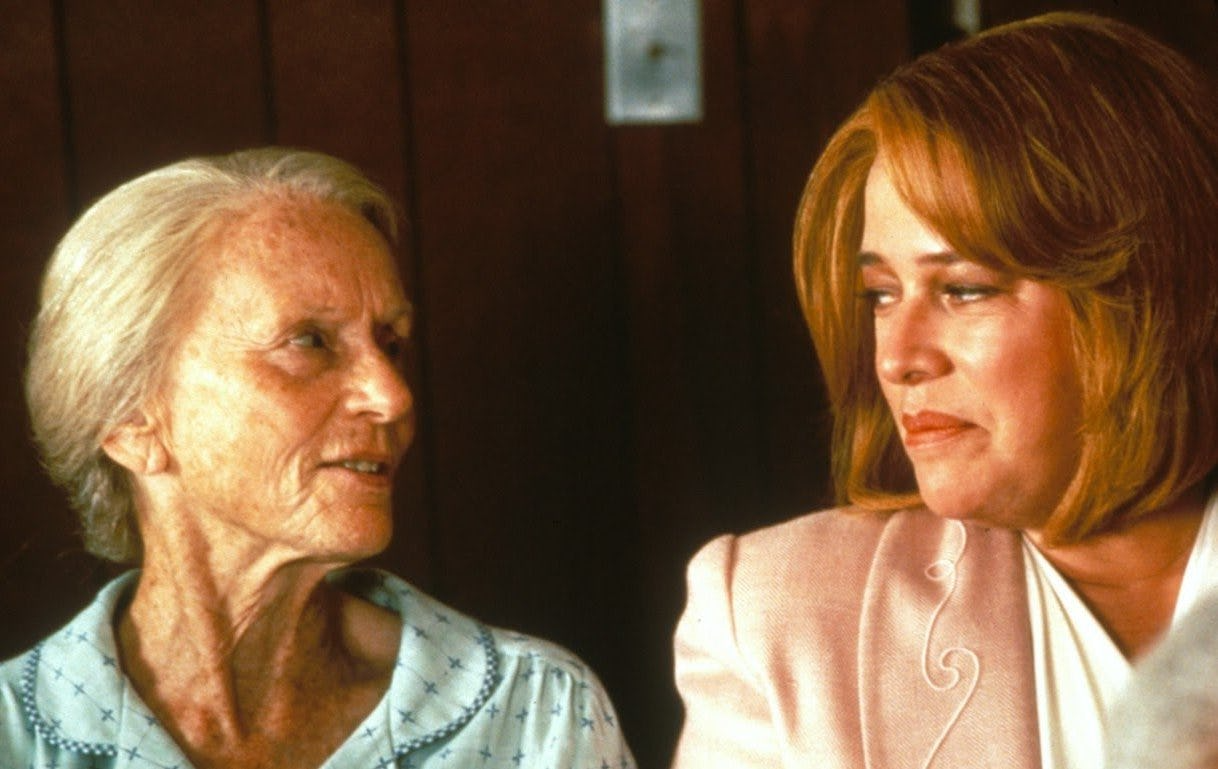
The Power of a Story Well Told
In Fried Green Tomatoes, storytelling is more than a method of connecting timelines—it is the very heart of the film. Ninny Threadgoode, portrayed with warmth and mischievous intelligence by Jessica Tandy, does not just remember the past. She revives it. Through her words, she resurrects Whistle Stop, a forgotten Alabama town; she brings Ruth and Idgie back to life; she gently stirs the ashes of memory into the spark of transformation for Evelyn Couch.
Ninny’s stories are not linear histories. They are acts of love, resistance, grief, and renewal. And for Evelyn, who begins the film adrift in a life of disappointment and invisibility, they become a form of lifeline.
The Nursing Home as a Frame for Revival
At first glance, the Rose Terrace Nursing Home is the end of the road—a place for the forgotten, the sidelined. But when Evelyn visits her husband’s Aunt Vesta, she stumbles upon Ninny, and in that sterile hallway, something extraordinary begins. From her wheelchair in a sunless corner of the world, Ninny begins to weave a tapestry that transcends time.
She does not ask Evelyn to sit and listen. She simply begins: “I wouldn’t be caught dead at a funeral…” From there, the floodgates of memory open.
In this contrast between the stagnancy of the nursing home and the vibrancy of Ninny’s recollections, we are shown that stories can break down walls. They can transport us from institutional decay into the breathless wild of Alabama woods, to the bustling warmth of the Whistle Stop Café, to moments of heartbreak and hilarity. The story becomes a vehicle for freedom.
Reviving Idgie and Ruth

Through Ninny’s narration, we are introduced to Idgie Threadgoode and Ruth Jamison—not as dusty figures of the past, but as living, breathing women of spirit and defiance. Ninny doesn’t just recount events—she relives them. She tells of Buddy’s death, Ruth’s marriage, the café, the fire, the courtroom drama. She doesn’t shy away from pain, but she never lets sorrow have the last word.
Importantly, the way Ninny tells their story allows for emotional ambiguity. She never labels Ruth and Idgie’s relationship, but her tone, her choice of details, her affection, and her knowing silences all point toward a deep, abiding love. She makes the invisible visible without ever directly confronting the viewer. That’s the quiet genius of her storytelling.
She restores dignity to women who were never allowed to speak for themselves in history books. Through Ninny, their laughter, anger, courage, and loss are preserved—not with the cold precision of a biographer, but with the messy tenderness of someone who loved them.
Evelyn’s Transformation Through Narrative
Ninny’s storytelling doesn’t exist in a vacuum. It has a direct, profound impact on Evelyn Couch, who listens week after week, often uncertain if the tales are real or imagined. But it doesn’t matter.
In her lonely, ignored, domesticated life, Evelyn finds something in Ninny’s voice that she’s never allowed herself to believe in—possibility. Possibility of change, of rebellion, of living outside the lines.
As she hears about Idgie jumping onto trains, calling out preachers, and fighting off racists, Evelyn herself begins to shift. She starts to say no. She stops hiding her anger. She becomes a woman who smashes a car in a parking lot and screams, “Tawanda!” A woman who demands respect, who begins to believe she can live more fully.
Ninny’s stories are the catalyst—but Evelyn’s transformation is the flame that catches.
The Oral Tradition and Feminine Legacy
The act of storytelling in Fried Green Tomatoes is rooted in oral tradition, particularly that of women passing down knowledge and memory through voice rather than text. Ninny doesn’t have a diary. There is no official record of the events in Whistle Stop. Everything lives in her words.
This method of transmission is deeply feminine. It reflects how generations of women, especially in the American South, have shared history—not through official channels but around kitchen tables, on front porches, or in the quiet of nursing homes. This is how legacies are preserved when the world doesn’t deem them worthy of books or museums.
Through Ninny, we understand that stories are survival.
The Question of Identity
One of the most debated questions in the film is whether Ninny is Idgie. The film never answers explicitly, and that ambiguity is intentional. In one interpretation, Ninny is simply Idgie’s sister-in-law. In another, she is Idgie, having disguised herself through time and now using her own stories to pass on a life no one ever truly understood.
But even if she’s not literally Idgie, spiritually, she is the same. Her fire, her defiance, her belief in love and loyalty—these traits echo unmistakably. It is this ambiguity that gives the story its mythic power. Ninny becomes the keeper of all stories, all lives that once mattered, all women who resisted erasure.
She becomes both witness and participant. And in that dual role, she transcends the ordinary.
The Final Story: Legacy in Motion
By the end of the film, Evelyn has changed. She is stronger, louder, more self-possessed. And Ninny, true to form, continues to tell stories. She moves in with Evelyn, perhaps to continue her role as narrator, or simply as friend. But one thing is certain: the story will go on.
And that’s the greatest legacy of all.
Conclusion: Memory as Resistance, Voice as Revival
In Fried Green Tomatoes, Ninny Threadgoode doesn’t just recount the past—she rescues it. She revives the voices of women silenced by time. She gives Evelyn the tools to reclaim her own voice. She challenges the audience to consider how memory can be a weapon against invisibility.
The film tells us that even when the café is closed, the town is gone, and the people have passed on, the story remains. Because someone, somewhere, will be listening.
And Ninny will be there, smiling, ready to begin: “Did I ever tell you about Ruth and Idgie?”
